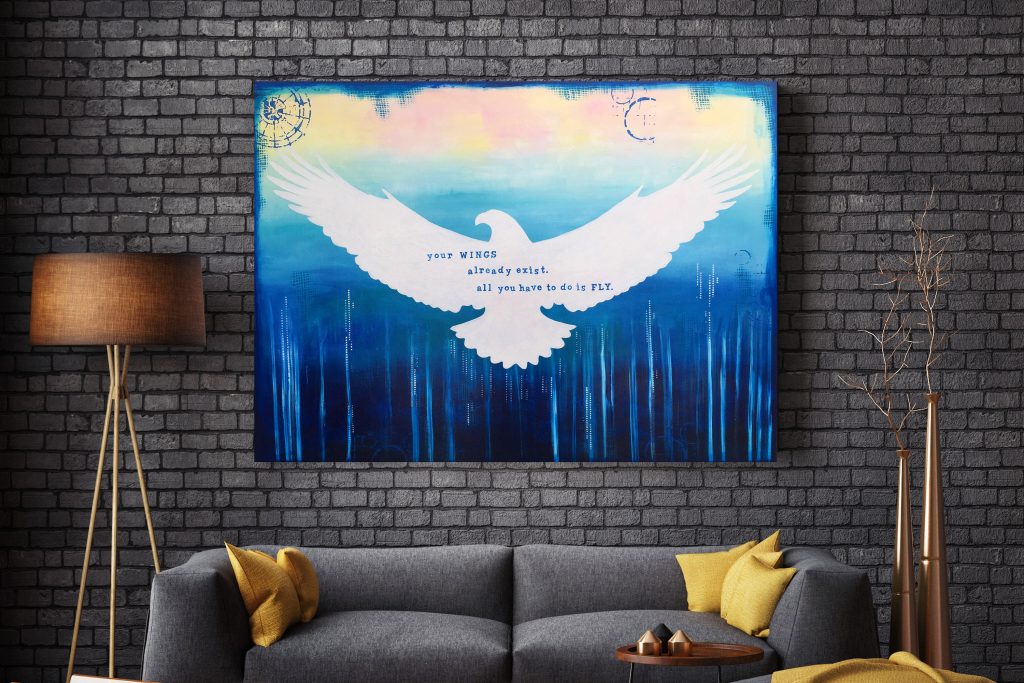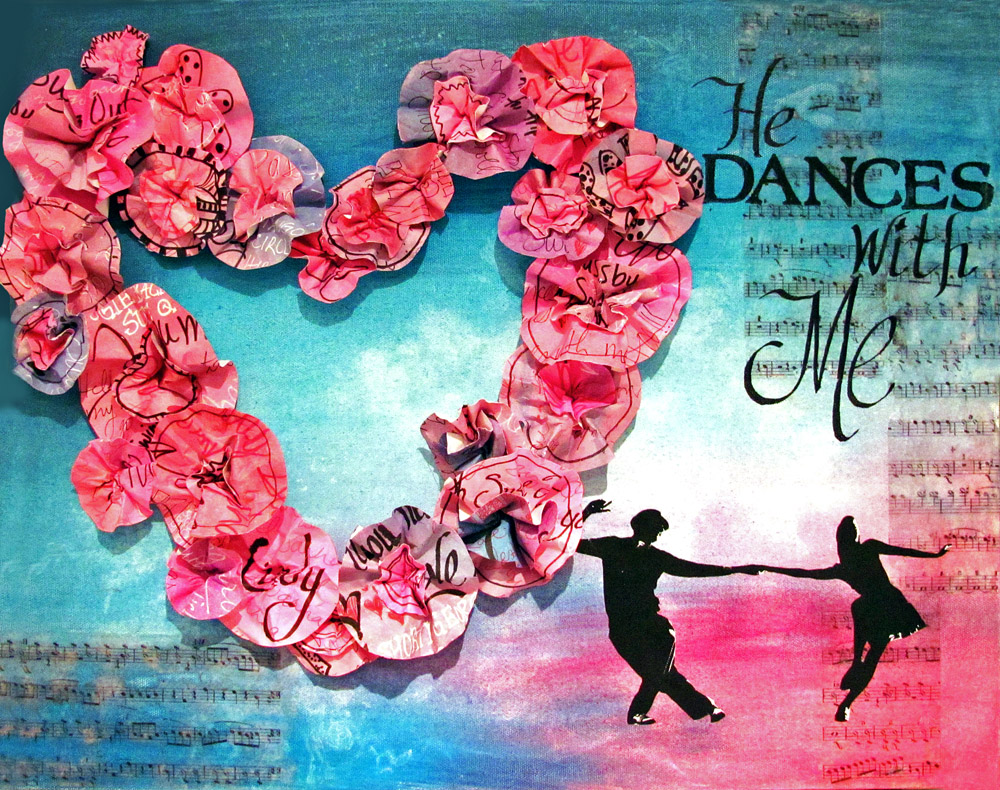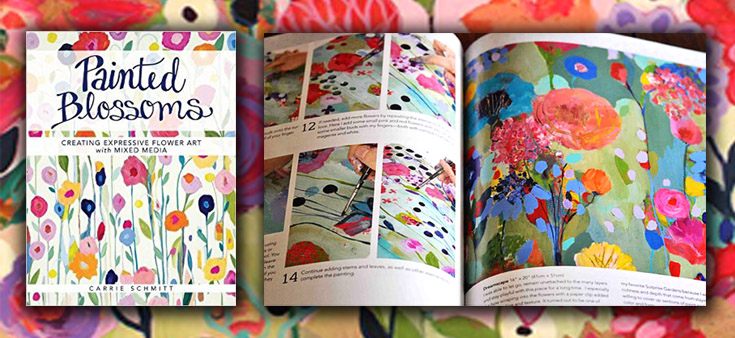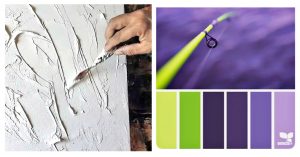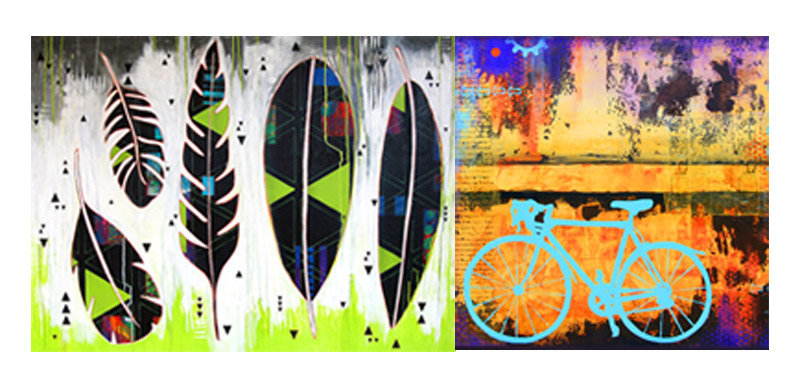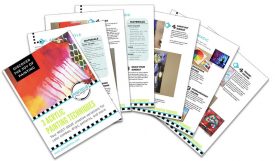Expressive artists will likely tell you that they hate to be confined by structure or rules. Just the thought of high school art classes that included the “Rules of Art” or group critiques makes us cringe. We do aim for cohesive art that is enjoyable to the viewer but you’ll never see a poster of art guidelines in our studios. I’ve found 3 Ways to use Design Elements when I’m stuck or feeling a need to bring the painting to a close, while still feeling free and breaking a few rules along the way.
THE FREEDOM OF ART
I remember the feeling I experienced when I first created a mixed media painting. My altered art and scrapbooking days were coming to a close and I had started following some Donna Downey Inspiration Wednesday tutorials (like this one). I felt free, playful, and joyful. It was one of the first times I didn’t have a set of instructions to follow or a specific goal as my end result.
The bold paint colors were swiped across my canvas: various purples, bright quinacridone magenta, and cobalt turquoise. Blending white into the wet edges created more colors. Brushing upwards created vertical lines. Thick, heavy acrylics created peaks and texture, while thin fluid acrylics spread easily and would drip if I added water. These paintings were playful experiments and when I felt it was done, I would add a quote or design and call it good.
Freedom in art means letting go and letting your inner child play. I posted a photo on Instagram here about getting lost in the moment of art.
BALANCING FREEDOM & STRUCTURE IN ART (AND LIFE)
Why does the term “Design Elements” make me cringe? I think it’s because it reminds me of school, being forced to follow a set of guidelines for an art project. Art rules just feel confining, as if there goes my fun. Gone. I was reading a chapter in Carrie Schmitt’s new book Painted Blossoms, titled “Design Elements” (which means I usually skip right passed and turn the page). For whatever reason, I read that page today and realized Yup, I was supposed to read that. It made me realize there is balance with freedom and structure that can be beneficial to art and life. We usually do these things without thinking about them.
Carrie basically says she “paints freely for as long as possible” and then she considers the elements when she’s stuck or ready to finish the painting. It’s like life, right? We move along in auto-pilot majority of the time until we hit a bump and realize something isn’t working. That’s when we sit down and give thought to How do I feel? What’s bothering me? What are possible solutions? It helped me realize I do the same thing with art. [Light bulb]
“They (design elements) can be useful but should never hinder you
– take what is helpful and leave the rest behind.”
-Carrie Schmitt
DESIGN ELEMENTS IN BULLET POINT FORM
You don’t have to have an art teacher’s poster of the design elements on your wall to check in with them. Think of them very simplistically.
- Line – can I see defined spaces by lines? (fat, think, straight, curvy, squiggly, horizontal, vertical, etc)
- Texture – get close to your painting and tilt your head; what does the surface of your painting look like? (smooth, rough, bumpy, glossy)
- Form – what shapes can you see in your artwork? (organic or geometric)
- Scale – check the size of your objects; variety is usually best
- Balance – is part of your painting overpowering or distracting? trust your intuition
- Pattern – repetition of shapes, motifs, or color; helps painting have a flow or movement, feeling of cohesion
- Contrast – stand back and squint your eyes; do you see good contrast in your artwork? (warm and cool colors, light and dark, etc)
- Variety – don’t be afraid to try something new; try a bold move
- Unity – does you piece of art flow or does it seem like it’s two separate paintings? Try repeating motifs to join them together (color, similar shade or shape)
3 WAYS I USE DESIGN ELEMENTS (AND BREAK A FEW RULES)
Painting is relaxing and fun for me, so I begin each new piece of art with wild abandonment. I sometimes have no idea what it will become. Most importantly, I just paint. Get color on the canvas, move it around, and relax my thoughts. My creative process continues like this until the background is complete, which is why it’s my favorite part. After that, I tend to put a little more thought into it.
Here are 3 Ways I use Design Elements in my painting process:
1. BEGINNING
The only elements I consider at the very beginning are Texture and sometimes a color palette, which affects Balance and Unity.
2. IN-PROGRESS &/OR FRUSTRATION STAGE
After I get the freestyle background completed, then I start thinking about Balance, Scale, Pattern, & Line (just to name a few). Will I add a specific subject like a horse, flower, etc. or will this painting be more abstract? Am I more in the mood for playing with color, pattern, or lines than focusing on a subject or theme?
Am I at a point where I’d like to throw my painting across the room? What is bugging me?
3. ENDING
When I’m ready for the painting to be done or If I start getting frustrated and see that my painting is “off” somehow, I starting going through the list in my head about Form, Scale, Balance, Pattern, Contrast, Variety, & Unity. My biggest trick is to step back from the painting 20+ ft. Squint your eyes, turn the painting 180 degrees, display it on your mantel for three days, or take a photo on your phone to view later. All of these tips help our eye to be more objective and get our head out of the way. You will suddenly “see it” and know what your artwork needs to feel just right.
YAY OR NAY?
Tell me:
What do you think of using design elements in your artwork?
Are they something you avoid?
Do you only use them if you get really stuck?
I’m curious to know how you all feel about this. Let me know in the comments.
Download FREE Resource: "Top 10 Art Supplies I Can't Live Without"

Learn the 10 Art Supplies I seriously can't live without . . . along with a photo, description, and link to get it for yourself!
